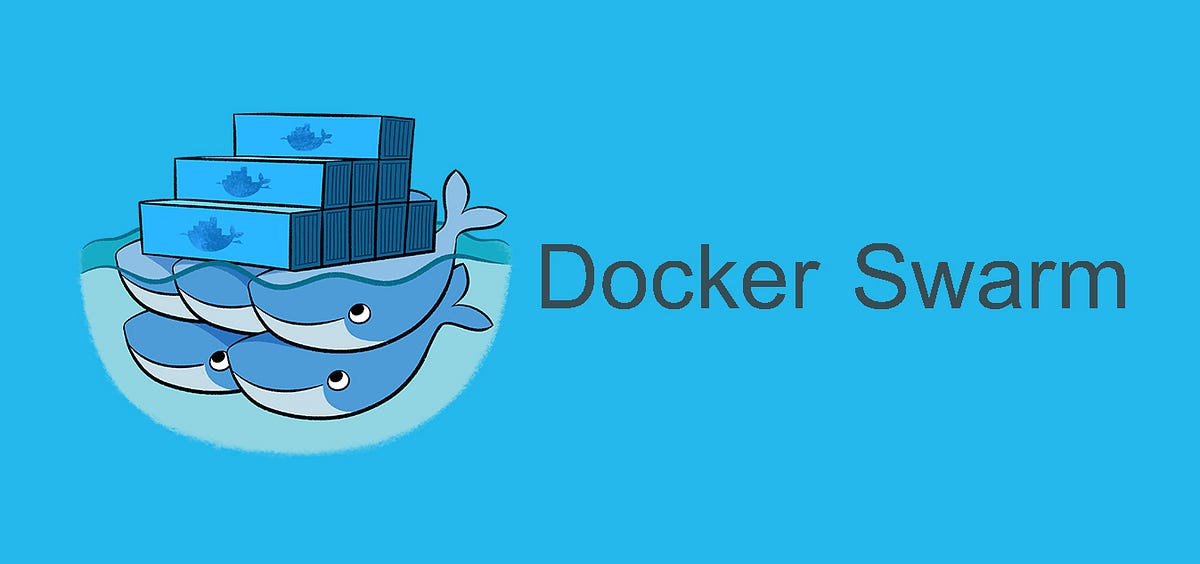☑️Day 29: Exploring Docker Swarm and Services🚀
 Kedar Pattanshetti
Kedar Pattanshetti
🔹Table of Contents :
What is Docker Swarm?
What is a Docker Service?
Creating and Managing Services in Docker Swarm
Scaling Services in Docker Swarm
Load Balancing in Docker Swarm
Rolling Updates in Docker Swarm
Docker Swarm vs. Kubernetes
✅1. What is Docker Swarm?
Docker Swarm is Docker's native clustering and orchestration tool. It transforms a group of Docker hosts into a single, virtual Docker engine, enabling the deployment and management of containers across multiple hosts as one.
Key Features:
High availability
Scalability
Service discovery
Load balancing
Built-in security with TLS
✅2. What is a Docker Service?
A Docker service is the core abstraction in Docker Swarm. It allows you to define containers that run in a distributed environment. A service includes:
Image: The Docker image used to create the container.
Replicas: The number of instances (or containers) to run.
Ports: Mapping host machine ports to the container’s ports.
✅3. Creating and Managing Services in Docker Swarm
Once Swarm mode is initialized, services can be created and managed with a few simple commands.
Initialize Docker Swarm:
bashCopy codedocker swarm init
Creating a Service:
bashCopy codedocker service create --name my-nginx -p 8080:80 --replicas 3 nginx:latest
This creates a service named my-nginx, maps port 8080 on the host to port 80 on the container, and runs 3 replicas.
Managing Services:
List Services:
bashCopy codedocker service lsInspect Service:
bashCopy codedocker service inspect my-nginxRemove a Service:
bashCopy codedocker service rm my-nginx
✅4. Scaling Services in Docker Swarm
Scaling is one of the most important aspects of Docker Swarm, allowing you to increase or decrease the number of container replicas running for a service.
Scaling a Service:
bashCopy codedocker service scale my-nginx=5
This scales the my-nginx service to 5 replicas.
Scaling ensures that your application can handle varying loads by automatically deploying more containers when needed.
✅5. Load Balancing in Docker Swarm
Swarm automatically provides load balancing for services by distributing incoming network requests across all the container replicas of a service.
Built-in Load Balancing:
- When you create a service with multiple replicas, Swarm ensures that traffic is distributed evenly across all running containers. No need for external load balancers!
Inspecting Network Setup:
bashCopy codedocker service ps my-nginx
✅6. Rolling Updates in Docker Swarm
Rolling updates allow you to update services without downtime by gradually updating replicas with the new version.
Update a Service:
bashCopy codedocker service update --image nginx:latest my-nginx
Real-Time Example: Imagine you have a web app deployed with Docker Swarm, and you want to release a new version without any downtime. Docker Swarm handles rolling updates by sequentially updating the replicas, so users always have access to the service.
Rollback: If the update fails or doesn't meet the required standards, Swarm allows you to rollback to the previous version:
bashCopy codedocker service rollback my-nginx
✅7. Docker Swarm vs Kubernetes
While Docker Swarm is ideal for simpler setups, Kubernetes is the industry standard for container orchestration in larger-scale, production environments.
| Feature | Docker Swarm | Kubernetes |
| Ease of Use | Simple and easy setup | More complex but highly configurable |
| Scaling | Fast and simple | Highly customizable scaling |
| Rolling Updates | Supported | Supported with more advanced strategies |
| Networking | Built-in load balancing | Advanced network management |
| Community Support | Smaller, Docker-specific community | Large, global, industry-wide community |
| Ecosystem | Focused on Docker containers | Supports multiple container runtimes |
When to Choose Docker Swarm: Ideal for small-to-medium-sized applications where you need simpler orchestration without too much complexity.
When to Choose Kubernetes: For larger-scale enterprise applications, Kubernetes provides more robust features like autoscaling, self-healing, and advanced networking.
✅Real-Time Example for Docker Swarm in DevOps
Let’s say you are working on a web application that has increased traffic due to a promotion. You need to scale up the frontend service quickly without any downtime.
Step 1: Initialize Swarm:
bashCopy codedocker swarm initStep 2: Create the Frontend Service:
bashCopy codedocker service create --name frontend -p 80:80 --replicas 3 frontend-image:1.0Step 3: Scale Up the Service:
bashCopy codedocker service scale frontend=5Step 4: Perform Rolling Update:
bashCopy codedocker service update --image frontend-image:2.0 frontend
This ensures that your app can handle the increased traffic without downtime, with Swarm balancing the load across all 5 replicas.
🚀Thanks for joining me on Day 29! Let’s keep learning and growing together!
Happy Learning! 😊
#90DaysOfDevOps
#DevOps #Docker #DockerServices #DockerSwarm #Orchestration #LoadBalancing #Scaling #CloudComputing #TechLearning #ShubhamLonde #Day29
Subscribe to my newsletter
Read articles from Kedar Pattanshetti directly inside your inbox. Subscribe to the newsletter, and don't miss out.
Written by
